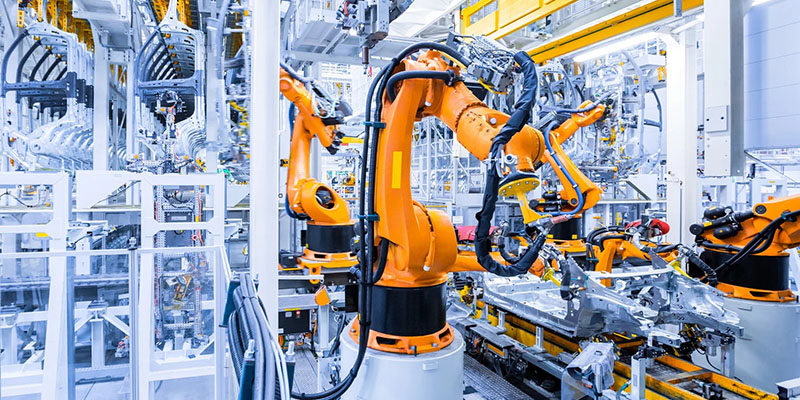Robotics and Automation

Anodizing in the Robotics and Automation Sector
In the robotics and automation sector, anodizing is a critical process that enhances the performance and longevity of various components, contributing to the efficiency and reliability of automated systems. One significant application is in the anodizing of robotic arms and structural elements. Anodized surfaces not only provide a sleek and protective finish but also offer resistance to corrosion, crucial for components exposed to industrial environments.
Robotics and automation equipment often include precision components like linear guides and ball screws. These components undergo anodizing for increased wear resistance and precise movement. The anodized layer ensures that these parts maintain their integrity and perform consistently in demanding industrial settings.
Electrical enclosures and control panels for automated systems are frequently anodized. Anodizing provides resistance to environmental factors, ensuring that the sensitive electronic components within these enclosures are protected from dust, moisture, and corrosion.
Conveyor systems, used extensively in automation and material handling, also benefit from anodizing. Anodized rollers and frames offer reduced friction, improved durability, and resistance to corrosion, contributing to the longevity and efficiency of these systems.
Anodize Printing in the Robotics and Automation Sector
In larger robotics and automation manufacturing facilities, anodize printing is an essential tool for efficient component labelling and branding. Identification tags on robotic arms, control panel labels, and safety information on automated machinery are all examples of where anodize printing ensures clear and durable markings, facilitating seamless assembly and maintenance processes. Additionally, anodize printing on product packaging provides clear product details for informative customer engagement.
In smaller custom industrial engineering and manufacturing businesses, anodize printing contributes to personalized branding and component labeling. Custom logos, part numbers, and operational instructions can be precisely printed on anodized surfaces, adding a unique touch to automated systems tailored to specific industrial applications.
Anodize printing extends to various locations within the robotics and automation sector. In large-scale manufacturing facilities, anodize-printed labels on automated machinery provide operational instructions and safety information. In research and development laboratories, anodize printing on prototypes and equipment ensures clear identification and traceability.
The adaptability and durability of anodize printing make it a valuable asset in the robotics and automation sector, enhancing both the assembly process and the visual appeal of automated systems across diverse applications, from large-scale manufacturing to custom industrial solutions.
